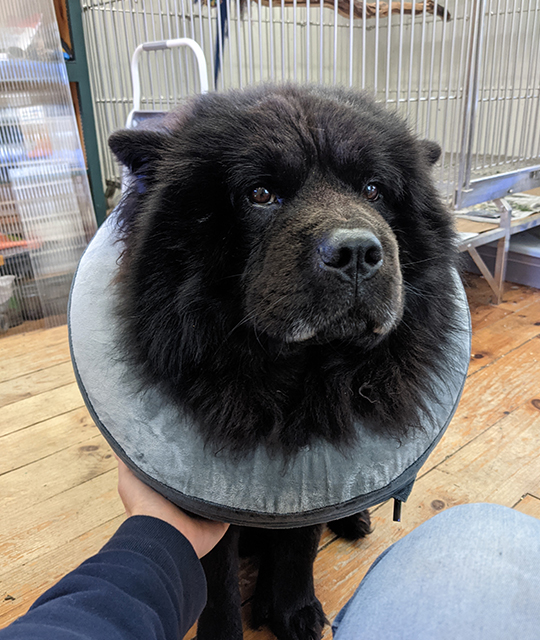
Interested in learning more about alternative surgical sterilization options?
Sterilization Options for Female Dogs
Ovariohysterectomy (Spay)
The ovaries and uterus are completely removed. When performed by the surgeons at Cashmere Veterinary Clinic, using state-of-the-art monitoring, surgical technique, and pain management, this is a safe procedure with minimal recovery time (around 2 weeks).
Ovary-Sparing Spay (OSS)
In this procedure, the entire uterus is removed to below the cervix, but the ovaries are left intact so the dog still has her female hormones. Dogs will still show behavioral and external signs of being in heat, but most have little to no discharge, they cannot get pregnant, and have a very low-to-zero chance of developing pyometra (a serious infection of the uterus), although the ovary-sparing spay procedure is relatively new and has not been studied long-term.

Important Considerations for Ovary-Sparing Spay
Recovery Time
- Comparable to the traditional spay when performed at our practice.
Incision Size
- The incision for this procedure may need to be longer than for a traditional spay to allow adequate visualization and access to the cervix. Complete removal of the cervix is essential for prevention of pyometra. Incision length does not affect recovery time, as incisions heal side to side, not end to end.
Surgery Duration
- Surgery time for this procedure can be longer than for a traditional spay.

Sterilization Options for Male Dogs
Neutering (Castration):
The testes are completely removed, and testosterone levels are significantly reduced.
Vasectomy:
This procedure removes the risk of causing unwanted pregnancies while leaving the dog completely hormonally intact. It is a relatively simple procedure with a quick recovery time. It is important to realize that the dog will remain hormonally intact but will be sterile.
Learn More About Alternative Surgical Sterilization
To read more about ovary-sparing spay/vasectomy, click here.




